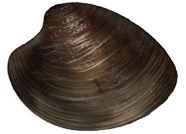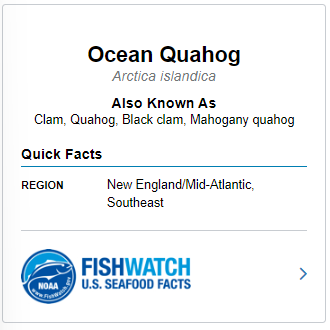Atlantic Surfclam and Ocean Quahog
The Mid-Atlantic Fishery Management Council manages the Atlantic surfclam and ocean quahog fisheries under a single Fishery Management Plan (FMP). Implemented in 1977, the FMP was the first federal management plan developed after passage of the Magnuson-Stevens Fishery Conservation and Management Act of 1976. With the exception of the Maine mahogany quahog fishery, the Atlantic surfclam and ocean quahog fisheries have operated under an individual transferable quota (ITQ) management system since 1990. The principal gear used in the fishery is the hydraulic clam dredge, which uses jets of water to dislodge ocean quahogs and surfclams from sediments. Based on the most recent stock assessments, the Atlantic surfclam and ocean quahog stocks are not overfished, and overfishing is not occurring.
Staff Contacts:
Jessica Coakley, (302) 526-5252
Jose Montanez, (302) 526-5258
Related Pages
Regulations
Additional information about the management and status of these fisheries, including current quotas and regulations, is available on the NOAA Fisheries FishWatch pages linked below.
Additional Resources
Actions Under Development
The section below lists any FMP frameworks or amendments currently under development. See the current year's Implementation Plan for details on upcoming specifications and other actions that may affect this FMP.
This action will concurrently conduct the 5-year EFH review required under the Magnuson Stevens Act while amending fishery management plans for the Council, as needed.
This amendment proposes changes to the species separation requirements in the Atlantic surfclam and ocean quahog fisheries.
Fishery Performance Reports and Information Documents
Fishery Management Plan and Amendments
Catch Share Program Review
The surfclam and ocean quahog fisheries are managed using Individual Transferrable Quotas (ITQs), which is a specific type of catch share program called a Limited Access Privilege Program (LAPP). LAPPs involves the issuance of a federal permit to harvest a quantity of fish expressed by a unit or units representing a portion of the total allowable catch of the fishery that may be received or held for exclusive use by a person (16 USC § 1853a). LAPPs are required to be reviewed regularly by the Council and the Secretary of Commerce.






Atlantic surfclam
Spisula solidissima